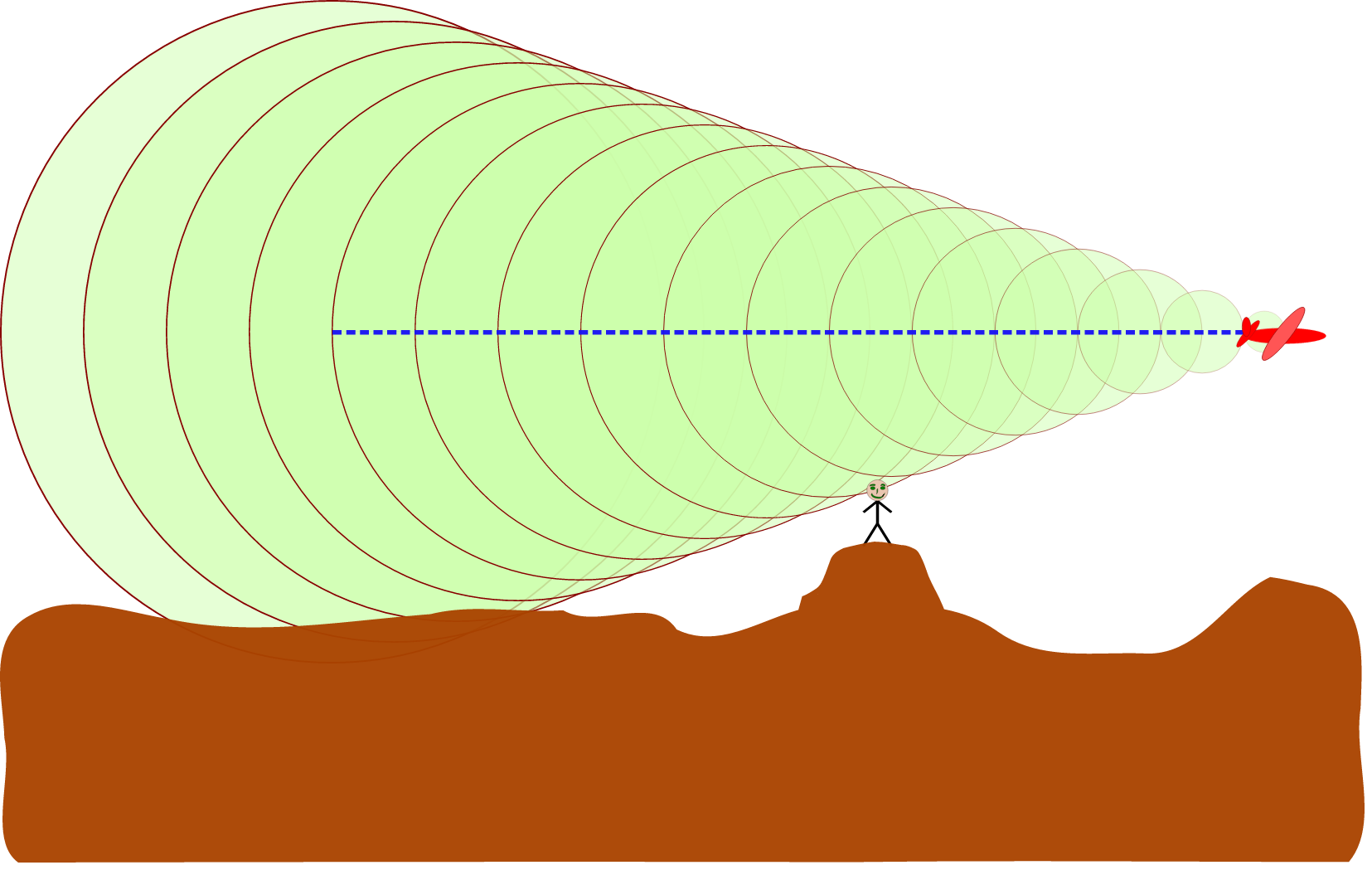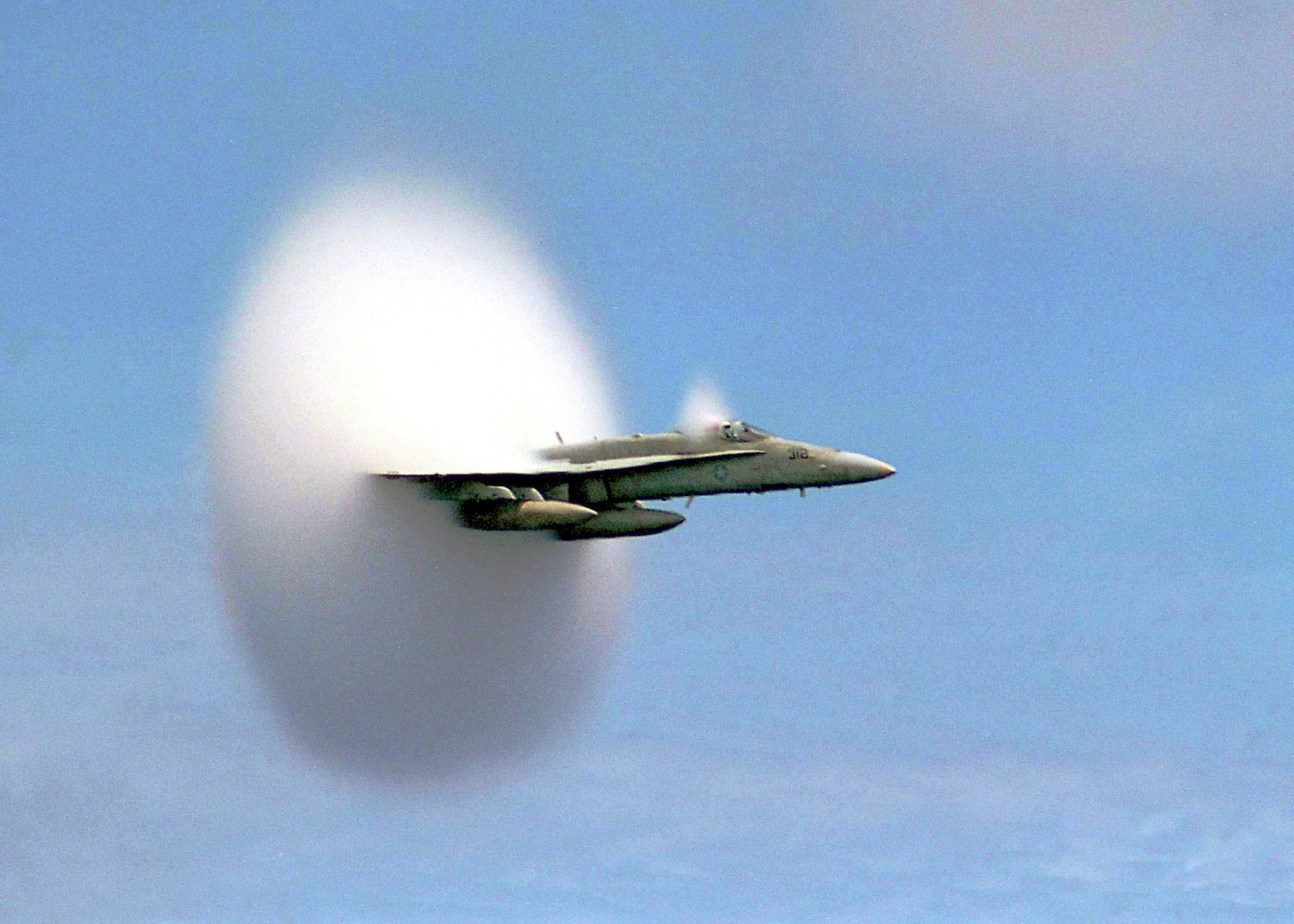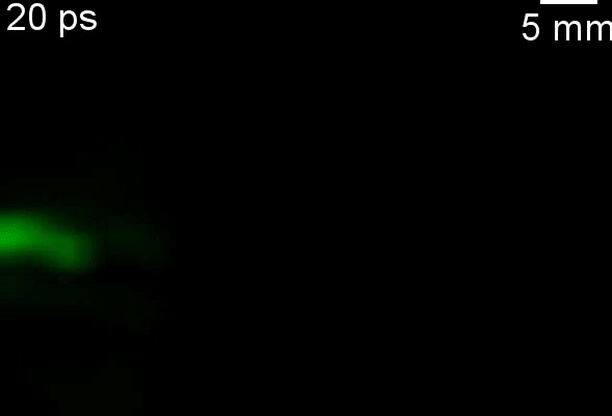The photon Mach cone was first filmed. Turn on the brain

If you ever stood next to a flying supersonic plane, you probably remember the deafening sound of a shock wave , which is accompanied by body movement at a speed of more than 1 Mach, that is, greater than the speed of sound in a given environment. The region of propagation of a shock wave from a supersonic aircraft is limited by the Mach cone . A group of scientists from the University of Illinois at Urbana-Champaign (USA) and the Tsinghua Research University (China) managed to capture for the first time on a video camera a “shock wave” of photons . Like sound, photons of light have a wave nature, therefore they form the same Mach cone if the body moves faster than the speed of light in the environment.
Mach sound cone
The Mach cone occurs when the body moves faster than the waves it generates. Most often they speak of a sound shock wave from an airplane that flies at a speed of more than 1 Mach, that is, greater than the speed of sound in a given environment.
In general, when driving at near-sonic speeds, a number of interesting effects are manifested, including the Prandtl-Gloert effect : a beautiful cloud behind the plane.
')

The Prandtl-Gloert effect: the phenomenon of the condensation of atmospheric moisture behind an object moving at transonic speeds
The cloud arises because the plane flying at high speed creates an area of low pressure behind it. After the passage, this area is filled with ambient air, in the process of which the air temperature drops sharply below the dew point (temperature jump as a result of the adiabatic process). If the humidity is high, then water vapor condenses in the form of tiny droplets forming a cloud.
The propagation of a sound shock wave is also an adiabatic process, like the Prandtl-Gloert effect. Here in the air there is a jump in pressure, density, temperature and air velocity. The sound itself is a fluctuation of the density, velocity and pressure of the medium. The adiabatic process at supersonic speed is accompanied by a shock wave, which at a distance from the energy source degenerates into a sound wave, and its propagation velocity approaches the speed of sound.
The Prandtl-Gloert cloud shown above is not directly related to the shock wave. It arises simply because of the cooling air and the formation of condensate. That is, this process cannot be called “visualization” of the Mach cone. But the experiment of scientists from the University of Illinois at Urbana-Champaign and Tsinghua University is a direct observation of this effect. Only not for sound, but for light.
Mach light cone

Light shock wave also has the shape of a cone, as well as a sound shock wave. To record it on video, the researchers used laser pulses as a moving body. They used a clever trick in which the pulses of light move at “superluminal” speed, that is, faster than the speed of light in the environment.

The first challenge in this experiment was to brake the light. Everyone knows that the speed of light in a vacuum is about 300,000 km / s, but in other environments the light moves slower, until it stops completely . To slow down the light in this experiment, scientists filled with carbon dioxide a tunnel between two plates made of a mixture of silicone rubber and alumina powder.
A green laser pulse of 7 picoseconds was launched into this tunnel. The trick is that inside the tunnel photons move faster than through plates along the tunnel. Therefore, when moving along a tunnel, laser pulses left behind a conical wake of slower light waves, which as a result of scattering superimposed on each other in the plates - this is the Mach cone.
In other words , a laser pulse is scattered on a gas and is essentially a source of light moving through a tunnel at a speed faster than the speed of light outside the tunnel. What forms such a cone.

In previous years, experiments have already been conducted that recorded the presence of Mach photon cones, but now for the first time, scientists have been able to shoot in real time on a video camera, as the only laser pulse moves in space.
For this, we had to construct a special electron-optical camera (slit camera), which can take up to 100 billion frames per second per exposure. The camera operated in three modes: in the first, the phenomenon was filmed directly, while the other two recorded time information. Then these data were combined to obtain scientifically reliable video of the distribution of the photon Mach cone.
Electron-optical camera of this design can be used in medicine and other areas of science for the registration of unpredictable light phenomena. Unlike other cameras, there is no need for pre-tuning and thousands of individual frames. This camera works at a single shutter speed.
The authors suggest that this camera can be used for video recording of impulses that neurons exchange among themselves in the process of mental activity. It becomes possible to accurately register the electronic traffic in the human brain. “We hope we can use our system to study neural networks to understand how the brain works,” said optical engineer Jinyang Liang from Washington University in St. Louis, lead author of the research.
The scientific article was published on January 20, 2017 in the journal Science Advances (doi: 10.1126 / sciadv.1601814).
Source: https://habr.com/ru/post/400837/
All Articles